The 5 Best Laser Treatments To Tighten Skin Under Your Eyes

The area under the eyes is the most common concern for patients seeking cosmetic laser treatments. This can be due to aging, genetics, or simple lifestyle choices. Whatever the cause, many patients seek ways to tighten skin under their eyes and achieve a youthful appearance.
Laser treatments are a popular and effective option for patients looking to tighten the skin under their eyes, but they’re only for some. Some different types of lasers can be used for this purpose, and your cosmetic laser specialist can suggest the best option for you based on your specific needs and goals.
REGENERATIVE TREATMENT FOR UNDER-EYE WRINKLES AND BAGS
Do you have wrinkles or bags under your eyes? The skin loses collagen and elasticity, which can cause wrinkles, sagging, and volume loss. But there’s hope! Regenerative treatments can help to replenish lost collagen and improve the appearance of wrinkles and bags under the eyes.
One popular regenerative treatment is platelet-rich plasma (PRP) therapy. PRP uses your body’s growth factors to stimulate collagen production and promote healing. It is a relatively new technique, but it has shown promising results in reducing the appearance of under-eye wrinkles and bags.
If you’re seeking a non-invasive way to reduce the appearance of wrinkles and rejuvenate your skin, then a regenerative treatment like PRP therapy may be proper for you.
[Image -Regenerative Treatment of Eye wrinkles and Bags]
Puffy eye bags are usually the biggest problem for eye treatment. Although eye bags cause less eye damage than genetic diseases, they can cause aging of the eye areas. The skin’s condition beneath your eyes can significantly impact the appearance of wrinkles and bags.
Consider regenerative treatments if you aim to build healthier eyelid skin and achieve a more youthful look. These can help to stimulate collagen production, improve circulation, and promote cell turnover, resulting in firmer, smoother skin.
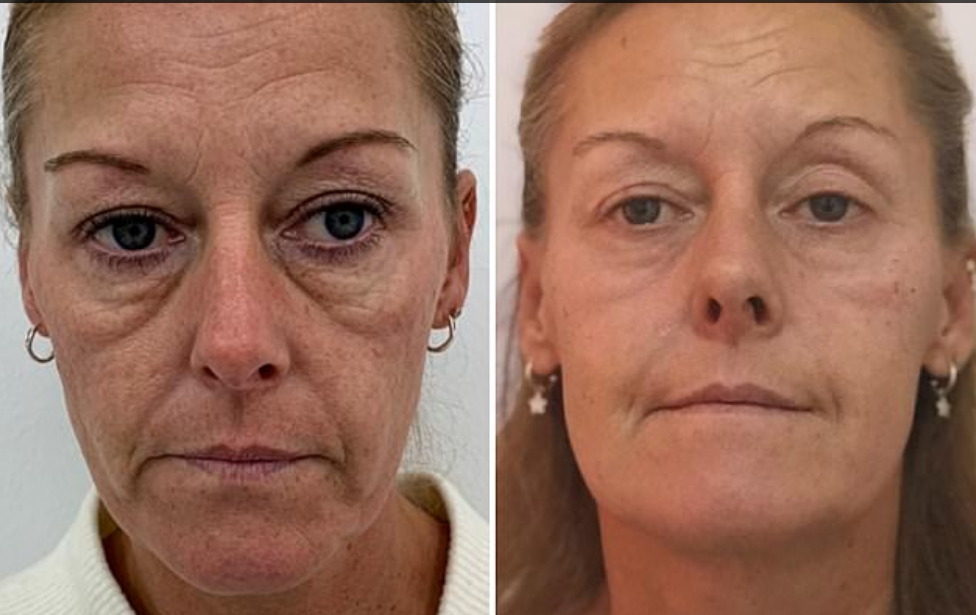
Various laser treatments are available, each with its benefits—The five best laser treatments to tighten the skin under your eyes.
1. Fractionated CO2 laser:
This laser treatment uses a high-energy beam of light to penetrate the skin and stimulate collagen production. A protein called collagen keeps the skin firm and elastic. This laser treatment can improve the appearance of wrinkles and fine lines.
2. Erbium laser:
This laser treatment uses a high-energy beam of light to remove the outer layer of skin. This laser treatment can improve the appearance of wrinkles, fine lines, and age spots. It can also help to tighten loose skin.
3. Nd: YAG laser:
This laser treatment is best for dark circles under the eyes. The laser focuses on the skin’s pigment and breaks it down, reducing the appearance of dark circles.
4. Radiofrequency microneedling:
This laser treatment combines radiofrequency energy with microneedling. The microneedles create tiny punctures in the skin, allowing the radiofrequency energy to penetrate deeper into the skin layers. This treatment stimulates collagen and elastin production, helping to tighten and firm the skin.
5. Intense Pulsed Light (IPL) laser:
This laser treatment uses intense pulses of light to target the deeper layers of skin. This promotes collagen production and improves the skin’s overall appearance. IPL also effectively reduces the appearance of dark circles, redness, and pigmentation issues.
Before deciding on laser treatment, it is essential to consult with a dermatologist or a certified laser technician to determine which treatment is best for you. They can evaluate your skin and recommend the most appropriate laser treatment to achieve your desired results.
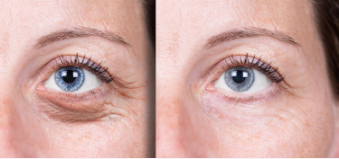
BEST NONSURGICAL TREATMENT FOR UNDER EYE WRINKLES
If you’re looking for a nonsurgical treatment for under-eye wrinkles, look no further than radiofrequency (RF) energy. RF energy is a type of energy that uses radio waves to heat tissue and stimulate collagen production. This makes RF energy an ideal treatment for wrinkles, as it can help smooth out the skin and reduce fine lines and wrinkles.
RF energy is a safe and effective treatment for wrinkles and can be used on all skin types. There are minimal side effects associated with RF energy, and the results can last several months. If you’re looking for a nonsurgical option for treating under-eye wrinkles, RF energy is a great choice.
It works by stimulating collagen production, which benefits the skin’s elasticity and firmness. It is a non-invasive procedure, so there is no downtime required. After the treatment, you may experience some redness, swelling, or slight discomfort, but these side effects are mild and will disappear within a few hours.
Results are typically seen after a single treatment, but multiple sessions may be necessary for more dramatic results. Overall, RF energy is a safe and effective option for treating wrinkles and improving the skin’s appearance. RF energy is also safe for other cosmetic treatments to achieve more complete results.
WHAT IS LASER SKIN TIGHTENING?
The cosmetic surgery of laser skin tightening uses laser energy to heat and tightens the skin. The laser heat helps break down collagen, promoting the production of new collagen and elastin. This process can help to improve the appearance of wrinkles, fine lines, and sagging skin.
Laser skin tightening can be performed on all skin types and tones and is usually done as an outpatient surgery, meaning you can go home the same day. The process takes about 30 minutes to an hour, and most people see results within a few weeks. However, you may need multiple treatment sessions to achieve the desired results.
Laser skin tightening is a secure and effective way to tighten loose skin. The results are usually long-lasting, but the length of time depends on many factors, including skin type, age, and lifestyle. Lifestyle choices, such as smoking and sun exposure, can shorten the duration of results.
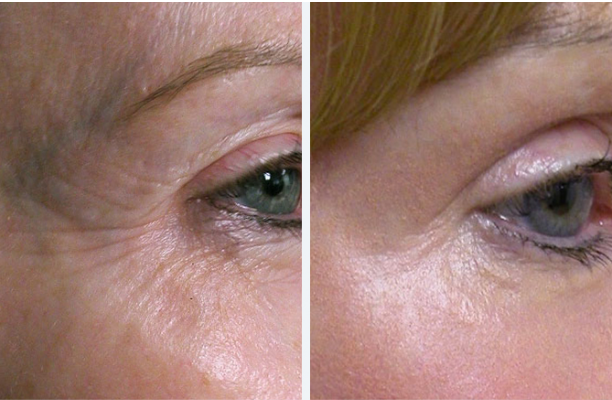
WHAT SHOULD I EXPECT AFTER LASER SKIN TIGHTENING?
For best results, a series of treatments may be recommended. Skin tightening usually requires 1-3 sessions spaced 4-6 weeks apart, depending on the treated area.
Results from laser skin tightening are usually gradual and continue to improve over time. After each treatment, the skin will appear tighter and more toned. There may also be some redness and swelling, but these side effects should resolve within a few days.
Lasers can tighten loose skin but are less effective than other methods, such as surgery. After laser skin tightening, you can expect your skin to feel tighter and have a more youthful appearance. The results take time, and it may take several treatments to see the full effect.
Laser treatment can provide noticeable results, but it is essential to be aware that it is a medical procedure. As with any medical practice, there is a recovery period following laser treatment.
How long does it take for skin to heal after laser treatment?
Here is what you need to know:
Laser treatment works by causing microtrauma to the skin, which means the skin will be minor damaged after the procedure. The good news is that the skin is very good at healing itself.
Most people will see a noticeable improvement in their skin within a few days after treatment. However, it can take two weeks for the skin to heal fully and for the results of the laser treatment to take effect.
During this time, it is crucial to avoid sun exposure, moisturize skin, and avoid harsh chemicals or exfoliants that can further irritate the skin.
Following any post-treatment instructions from your dermatologist or aesthetician is essential to ensure the best possible results. Overall, the healing time can vary depending on the type of laser treatment, the individual’s skin type, and overall health.
The skin takes about two to four weeks to heal after laser treatment. The type of laser used will affect the healing time. For example, CO2 laser resurfacing takes about two to three weeks to heal, while Erbium laser resurfacing takes four to six weeks.
ARE THERE ANY RISKS OR SIDE EFFECTS?
Laser skin tightening is a non-invasive, minimally-ablative technique used to tighten skin by heating dermal collagen fibers with an infrared laser. It has become a popular cosmetic procedure because it is much less risky and has fewer side effects than other skin-tightening procedures, such as surgery.
Despite its popularity and effectiveness, some risks and side effects are still associated with laser skin tightening. These include burns, blistering, and pigment changes. Most side effects are temporary and will resolve independently, but some may require medical treatment.
Overall, laser skin tightening is a secure and efficient method to improve the appearance of your skin. If you are considering this procedure, discuss all the risks and side effects with your doctor to make an informed decision.
Before considering any laser skin tightening, weighing the risks and benefits is crucial. Are there any dangers or adverse effects associated with the procedure? What are the potential benefits? Are there any other options? These are essential questions to consider before making a decision.
HOW DOES LASER SKIN TIGHTENING WORK?
Our skin loses collagen as we age, which gives our skin a youthful-looking appearance. This loss of collagen can cause our skin to sag and wrinkle. But there’s no need to despair – laser skin tightening can give your skin the lift it needs to look young and fresh again.
Laser skin tightening is a non-invasive, FDA-approved procedure that uses laser energy to heat the skin and stimulate collagen production. The results are tighter, smoother, and more youthful-looking skin.
The ideal candidates for laser skin tightening are people with mild to moderate skin laxity looking for a nonsurgical alternative to surgery. If you are considering laser skin tightening, it’s essential to consult with a board-certified dermatologist or plastic surgeon to see if the procedure is proper for you.
HOW TO FIND A PROVIDER?
If you are seeking a provider to help you with laser Tighten skin under the eyes treatments, it is vital to research the provider and ensure they are qualified to do the treatments. There are things to look for when researching providers to ensure they are capable.
The first thing you want to look for is whether or not the provider is licensed. Most states require providers to be licensed to do laser treatments. You can usually read and learn more about this information on the provider’s website.
The second thing you want to look for is whether or not the provider has had any complaints filed against them. You can usually find this information on the state’s website.
The third thing you want to look for is whether or not the provider is board certified. Board certification is only required in some states, but it is an excellent way to ensure the provider is qualified to do the treatments.
The fourth thing you want to look for is whether or not the provider uses FDA-approved products. FDA-approved products are the safest for laser treatments, fillers, and other cosmetic procedures.
The fifth thing you want to consider is the provider’s experience level. Choosing a provider with years of experience in the field and a good track record of successful procedures is essential.
Finally, seek a provider who makes you feel comfortable and confident. The provider should be willing to answer all of your questions, explain the procedure thoroughly, and provide you with realistic expectations. If you feel uncomfortable with the provider during your consultation, finding someone you feel more at ease with is best.
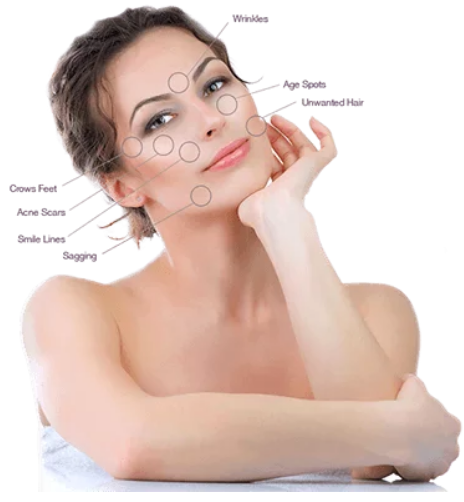
Which laser is best for tightening skin around eyes?
Many different lasers can tighten the skin around the eyes, but not all are equally effective. Some of the most popular lasers for this purpose include the Fraxel laser, the Palomar laser, and the recently developed Icon laser.
So which one is the best? The answer may vary depending on your needs and skin type, but the Palomar laser is generally considered the most effective for tightening the skin around the eyes. This laser uses high-intensity light to stimulate collagen production, which helps tighten and smooth the skin.
While selecting, there are a few things to consider laser for tightening the skin around the eyes. These include the type of laser, the wavelength, the pulse duration, and the spot size.
The best laser for tightening the skin around the eyes is the fractional CO2 laser. This laser uses a wavelength of 10,600 nm and has a pulse duration of 100-250 microseconds. Choosing a laser with a spot size between 0.1-1 millimeter is also essential, as this allows for precise targeting of the area around the eyes without damaging surrounding tissue.
Another factor to consider is the experience and skill of the person performing the laser treatment. Choosing a qualified and experienced medical professional with a deep understanding of the procedure is crucial to achieving the best results.
PREPARING FOR LASER SKIN TIGHTENING
Preparing for laser skin tightening is vital to ensure the best possible results. We’ll review all the information you need to know to prepare for your procedure, including what to expect during and after treatment.
Before Your Treatment
1. Consult with a dermatologist or plastic surgeon: Before scheduling your laser skin tightening treatment, it’s essential to consult with a board-certified dermatologist or plastic surgeon. They will evaluate your skin type, medical history, and health condition to determine whether laser skin tightening suits you.
2. Avoid sun exposure: It’s crucial to avoid sun exposure at least three weeks before your procedure. Sun exposure can damage your skin, making the skin tightening treatment less effective. You can also use sunscreen to protect your skin from harmful UV rays.
3. Avoid certain medications: Some prescription and over-the-counter medications can affect your skin’s healing process. You must inform your doctor about your medications or supplements before treatment.
4. Avoid smoking and alcohol: Smoking and alcohol can impair your skin’s healing ability. It’s best to avoid these habits for at least two weeks before and after your laser skin tightening treatment.
During Your Treatment
1. Cleanse your skin: Before treatment, your skin will be cleansed with a gentle cleanser to remove dirt, oil, and no makeup or skin care products.
2. Application of numbing cream: A topical anesthetic cream may be applied to your skin to minimize discomfort during the procedure.
3. Laser application: The doctor will use the laser device to target the specific areas of your skin that need tightening. The laser light heats the deep layers of your skin, stimulating collagen production and tightening the skin.
After Your Treatment
1. Redness and swelling: Some redness and swelling may occur after your treatment. This is normal and will go away within a few days.
2. Sun protection: Protecting your skin from sun exposure after the treatment is essential. Use sunblock with a minimum SPF of 30 and avoid direct sunlight as much as possible.
3. Avoid strenuous exercise: Avoid strenuous exercise, including jogging, cycling, or weight lifting, for a few days after the treatment.
4. Follow-up appointments: Your doctor may schedule follow-up appointments to monitor your progress and determine whether additional treatments are necessary.
Preparing for laser skin tightening is essential to ensure optimal results. Avoid sun exposure and certain medications, and follow the aftercare instructions. With proper preparation and aftercare, you can enjoy younger-looking, smoother skin with laser skin tightening.
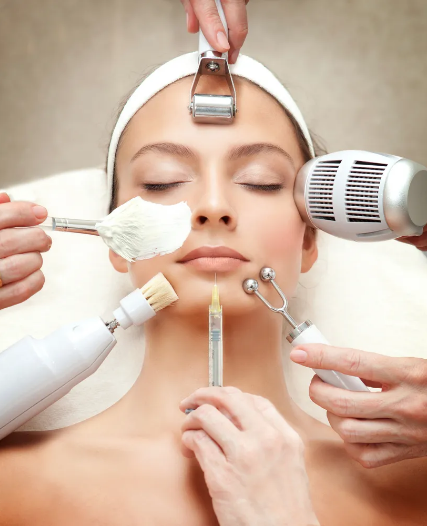
Does skin tighten after blepharoplasty?
There is no simple solution when it comes to the question of whether or not skin tightens after blepharoplasty or eyelid surgery. The extent to which your skin will tighten depends on several factors, including age, skin type, and the time of the surgery.
That being said, it is generally agreed that skin tightening does occur to some degree after blepharoplasty. The skin around the eyes is fragile and delicate, so it is unsurprising that after the surgery, the skin around the eyes may feel tight and uncomfortable. However, this is temporary, and the skin will eventually return to normal. In some cases, the skin may even be tighter after the surgery than before.
How much time is required to recover from eyelid plastic surgery fully? The surgery is not without its risks and side effects. Most people who have eyelid surgery recover within a week or two. However, the swelling and bruising can take up to a month to completely disappear.
Recovery times vary from person to person, but usually, patients with plastic surgery on their upper eyelids recover more quickly than those whose upper and lower eyelids undergo surgery.
There is no easy answer to whether skin will tighten after blepharoplasty. It depends on various factors, including the patient’s age, the extent of the surgery, and the healing process. In some cases, laser skin resurfacing may be necessary to achieve the desired results, but the skin is only guaranteed to be partially tight.
How long does your face stay red after CO2 laser treatment?
There is no one solution to this question, as the duration of redness after CO2 laser treatment will vary depending on some factors. However, many patients will experience redness from a few days to weeks. In some cases, the redness may last for a month or longer.
If you are considering CO2 laser treatment, discussing with your doctor what you can expect regarding side effects and recovery time is essential. This will help you prepare for the treatment and know what to expect afterward.
It is crucial to avoid sun exposure during this time as the skin will be extra sensitive. After a week, the redness should start fading, and you can expect full results within 3-6 months.
UNDER EYE WRINKLES – A COMMON CONCERN AND COMMON PITFALLS
Under-eye wrinkles are a common cosmetic concern and pitfall in seeking a youthful appearance. The skin is thin and sensitive around the eyes, often the first area to show signs of aging.
There are many causes of under-eye wrinkles, including sun damage, smoking, dehydration, and genetics. Fortunately, there are some ways to minimize the appearance of under-eye wrinkles, including topical creams, fillers, and laser treatments.
As we age, it’s not uncommon to start seeing wrinkles form under our eyes. This can cause concern for many people, as these wrinkles can make us look older than we are.
A few things can cause under-eye wrinkles, but the most common cause is sun damage. UV rays can damage the collagen in our skin, leading to wrinkles. Another common cause of under-eye wrinkles is smoking. The chemicals in cigarettes can damage the skin and lead to wrinkles.
You can do a few things to prevent or reduce under-eye wrinkles. One good thing you do is protect your skin from the sun by wearing sunscreen or sunglasses outdoors. You can also avoid smoking to help keep your skin healthy.
If you already have wrinkles, some topical treatments can help reduce the appearance of wrinkles, such as retinol creams or serums that contain antioxidants like vitamins C and E.
Additionally, getting enough sleep, staying hydrated, and eating a healthy diet rich in antioxidants and essential fatty acids can also help maintain the health and elasticity of your skin. Regularly massaging the under-eye area with a gentle, upward motion using your fingertips can also help improve circulation and reduce wrinkles.
Finally, suppose you’re concerned about deeply set wrinkles or want a dramatic improvement. More advanced treatments, such as injectable fillers or laser resurfacing, can help smooth out wrinkles and restore a youthful appearance.
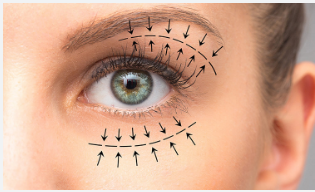
LASER TREATMENT FOR UNDER-EYE WRINKLES
Laser treatment for under-eye wrinkles effectively minimizes fine lines and wrinkles around the eyes. The treatment involves using a laser to stimulate the skin’s ability to produce collagen, which helps tighten and smooth out the skin.
Two types of lasers are commonly used for this treatment: ablative and non-ablative. Top-layer skin is removed using ablative lasers, stimulating collagen production, while non-ablative lasers penetrate the skin without removing any layers.
Both lasers can effectively treat under-eye wrinkles, but ablative lasers are typically used for more severe wrinkles. In contrast, non-ablative lasers are better suited for mild to moderate wrinkles.
Laser treatment for under-eye wrinkles is relatively quick and painless, and most people can return to normal activities immediately after the procedure. Redness and swelling, however, might be present around the treated area for a few days.
While laser treatment can effectively reduce the appearance of under-eye wrinkles, it is inappropriate for everyone. Candidates for this treatment should have good skin tone and elasticity and no active medical conditions that might interfere with the healing process. Treatment is done in a series of sessions, and maintenance treatments may be necessary to keep the wrinkles from returning.
INTENSE PULSED LIGHT AND RADIOFREQUENCY COMBINATION
Intense pulsed light (IPL) and radiofrequency (RF) are popular skin rejuvenation treatments often used to produce better results. IPL uses brief pulses of light energy to improve the looks of sun damage, fine lines, and uneven skin tone, while RF uses radio waves to stimulate collagen production to heat the skin.
When these two treatments are combined, they can provide even better results than either alone. The combination of IPL and RF can improve the appearance of sun damage, wrinkles, and uneven skin tone, and it can also help to tighten the skin and improve its texture. If you’re looking for a skin rejuvenation treatment that can offer you all these benefits, the IPL and RF combination may be right for you.
IPL (intense pulsed light) therapy reduces the appearance of age spots, freckles, and acne scars. It uses high-intensity light to penetrate the skin and stimulate collagen production, which helps to reduce the appearance of fine lines and wrinkles. However, IPL alone may not be enough to achieve the best possible results.
On the other hand, RF (radiofrequency) therapy uses energy waves to heat the underlying layers of the skin. This heat promotes collagen production, which in turn can help to tighten loose skin and reduce the appearance of wrinkles. While RF is effective on its own, combining it with IPL can help to create a more comprehensive skin rejuvenation treatment.
Combining IPL and RF can produce better results because they work differently. IPL targets the top layer of the skin, while RF penetrates deeper into the tissues. This combination makes it ideal for those looking to address various skin issues, such as texture, tone, and laxity. When used together, they can help address multiple skin concerns simultaneously.
Overall, the combination of IPL and RF is safe and effective for most skin types. However, as with any cosmetic treatment, it’s essential to consult a qualified professional to determine if this treatment is proper for you. With the right treatment plan and a commitment to good skin care practices, you can achieve a more youthful, radiant complexion that you’ll be proud to show off.
CAUSES OF WRINKLES UNDER EYES
1. Age: As we age, our skin becomes less elastic and thin, which can lead to wrinkles.
2. Sun exposure: The skin’s collagen and elastin fibers can be damaged, leading to wrinkles, by the sun’s harmful UV rays.
3. Smoking: Smoking can reduce blood flow to the skin, causing it to thin and making it more prone to wrinkles.
4. Dehydration: Lack of hydration can cause the skin under the eyes to appear dry and wrinkly.
5. Genetics: Some people are more predisposed to wrinkles under their eyes due to their genetics.
6. Sleep position: Sleeping on your stomach or side can cause the skin around the eyes to crease and form wrinkles.
7. Facial expressions: Repetitive facial expressions like squinting and frowning can cause lines and wrinkles to form around the eyes.
8. Diet: A diet high in sugar and processed foods cause inflammation in the body, leading to wrinkles.
9. Lack of skincare: Failing to moisturize and care for the delicate skin around the eyes can lead to wrinkles.
10. Pollution: Exposure to environmental pollutants causes damage to the skin’s collagen and elastin fibers damaged, leading to wrinkles.
TREATING UNDER EYE WRINKLES FOR DARKER SKIN
Several options are available to treat under-eye wrinkles for darker skin:
1. Use Retinol: Consider using retinol to reduce the appearance of under-eye wrinkles. A type of vitamin A called retinol promotes cell turnover and collagen production, resulting in firmer skin. Darker skin types should start with a lower concentration of retinol and gradually work up to reduce the risk of irritation.
2. Apply Sunscreen: Regular use of sunscreen can help prevent further damage to the skin, reducing the risk of premature aging and wrinkles. Search for a broad-spectrum sunscreen with an SPF of 15 or higher is ideal. 30 or higher and apply it daily, even on cloudy days.
3. Hydrate and moisturize: Keeping the skin hydrated and moisturized can plump the skin and make wrinkles less noticeable. Look for moisturizers that contain hyaluronic acid, glycerin, or other humectants.
4. Get Adequate Sleep: Lack of sleep can exacerbate the appearance of under-eye wrinkles. Ensure you sleep well every night to allow your skin to regenerate.
5. Chemical peels and Microdermabrasion: Consider getting a professional treatment like a chemical peel. Chemical peels and microdermabrasion can exfoliate and resurface the skin, minimizing the appearance of wrinkles. Consult with a dermatologist before any such procedures.
UNDER EYE BAGS AND WRINKLES TREATMENT
1. Get Enough Sleep: Lack of sleep can cause eye bags and wrinkles. Keep in mind that you get at least 7-8 hours of sleep per night.
2. Use A Good Eye Cream: Choose an eye cream that contains retinol, vitamin C, or peptides, which can help minimize the appearance of wrinkles and fine lines around the eyes.
3. Stay Hydrated: Drink plenty of water to keep your skin hydrated to prevent wrinkles from appearing.
4. Eat A Healthy Diet: A diet high in fruits, vegetables, and good fats can be beneficial to prevent wrinkles by providing the nutrients for healthy skin.
5. Protect Your Skin: Wear sunglasses, a hat, and SPF to protect your skin from harmful UV rays, which can cause wrinkles and increase the appearance of under-eye bags.
6. Consider Cosmetic Treatments: For severe under-eye bags or wrinkles, consider cosmetic treatments such as fillers or laser treatments. Talk to a dermatologist before getting plastic surgery to decide the best action for your skin type.